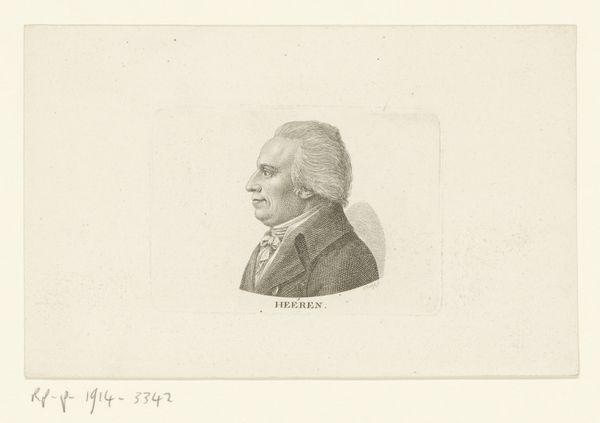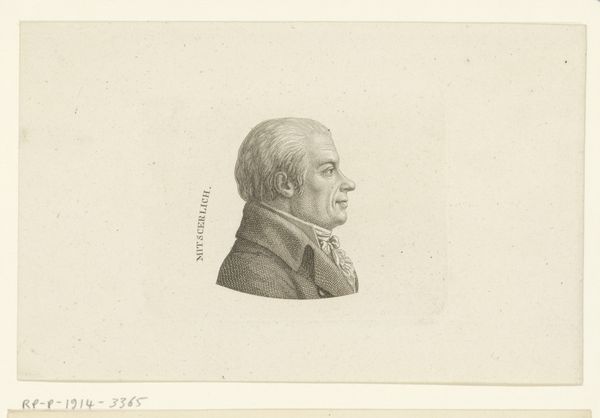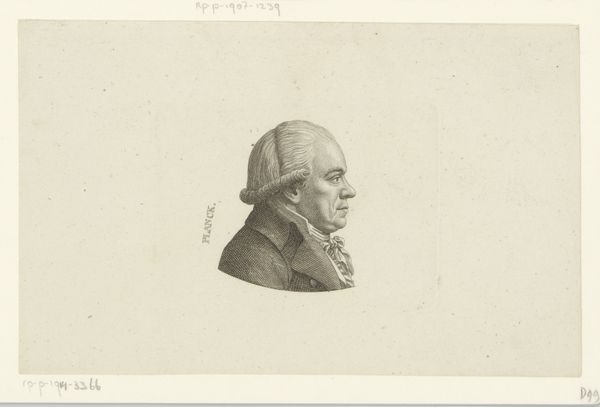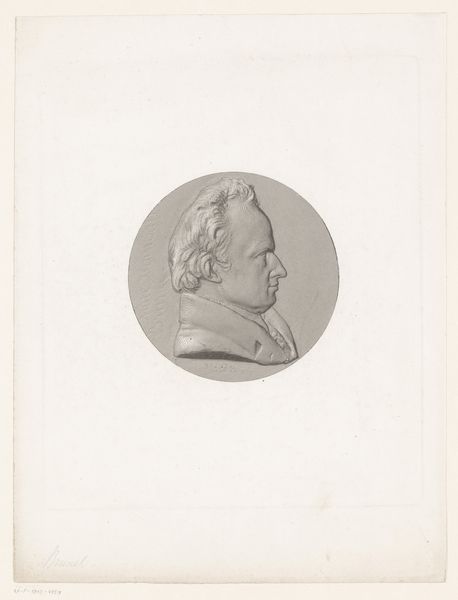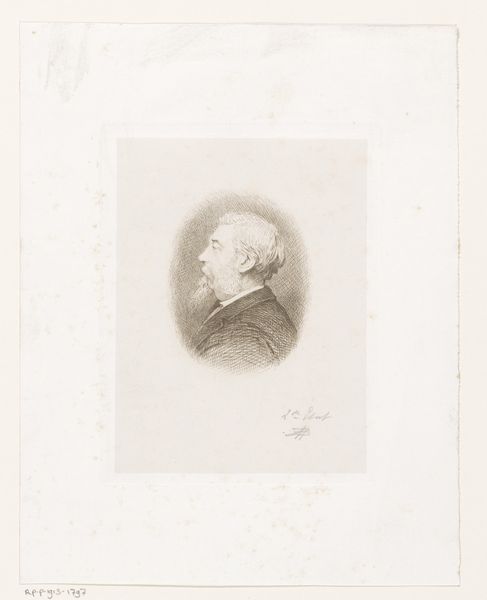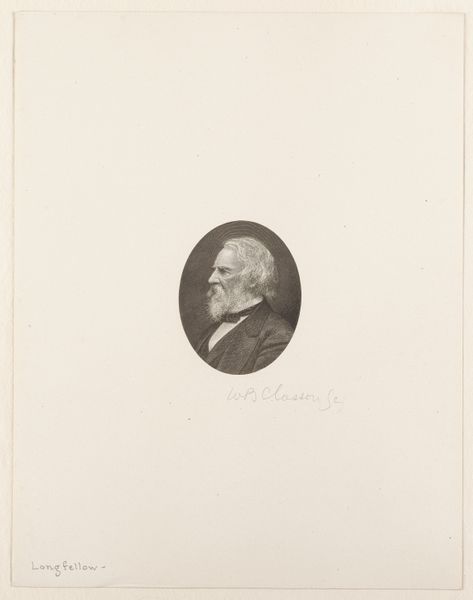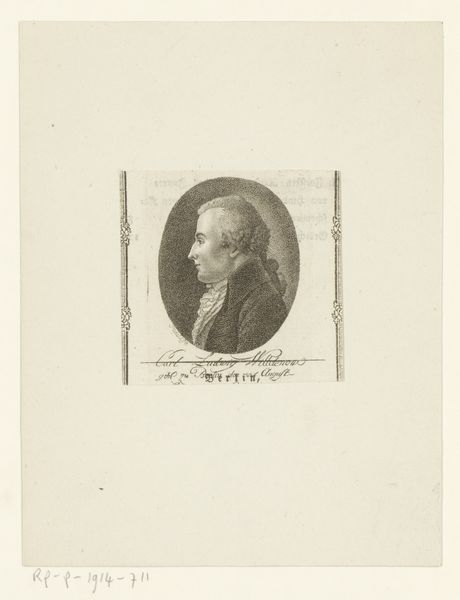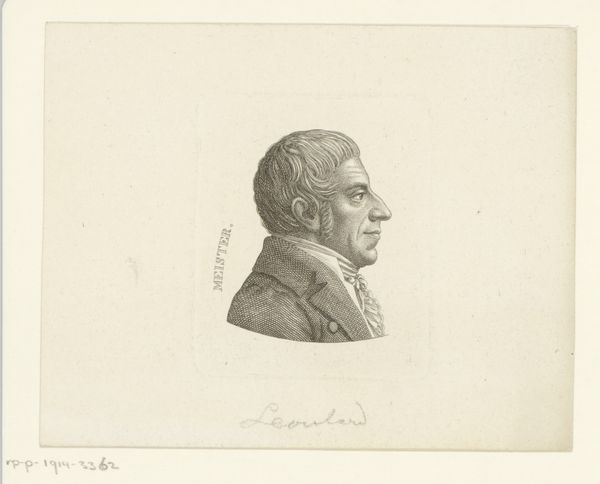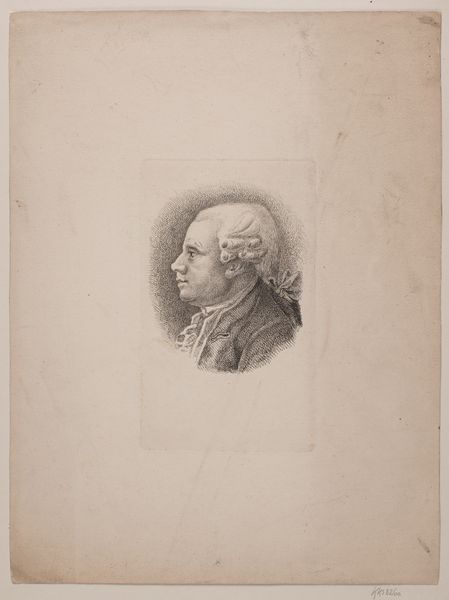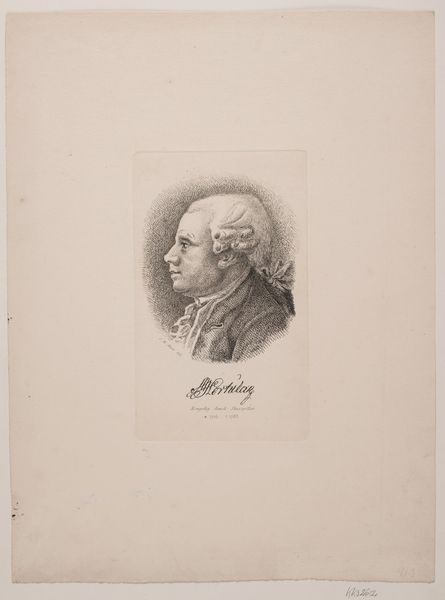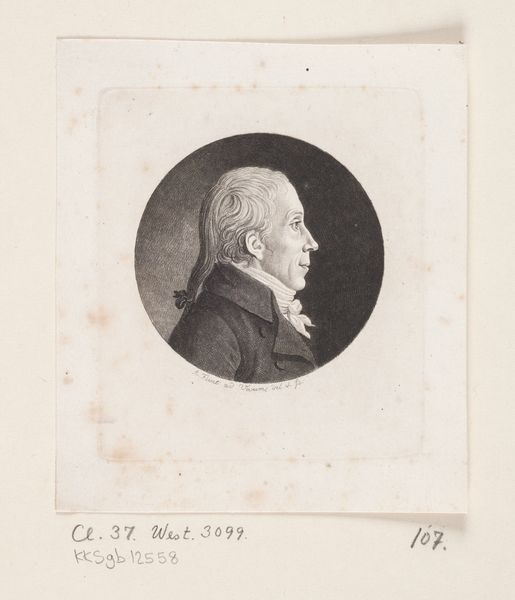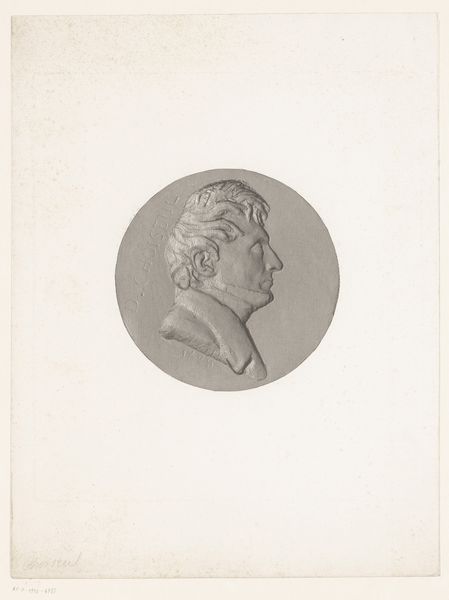
drawing, print, pencil, engraving
#
portrait
#
pencil drawn
#
drawing
#
neoclacissism
#
light pencil work
# print
#
pencil sketch
#
old engraving style
#
pencil drawing
#
pencil
#
pencil work
#
engraving
Dimensions: height 69 mm, width 95 mm
Copyright: Rijks Museum: Open Domain
Editor: So, here we have Ernst Ludwig Riepenhausen's "Portrait of Arnold Hermann Ludwig Heeren," made sometime between 1775 and 1840. It looks like it's an engraving, maybe with pencil? It feels very classical in its simplicity. What do you see in this piece? Curator: I see an object deeply embedded in a network of material and social relations. Look at the precision of the engraving – the labor involved in producing such a refined image for widespread consumption! This wasn’t just about capturing a likeness; it was about disseminating an image of power and intellect to a broader audience. Editor: So you're saying the *act* of making the engraving, and how it was distributed, is just as important as the image itself? Curator: Exactly. Consider the availability of paper and the technology of printmaking at that time. This image wasn’t created in a vacuum. The tools, the workshop, the system of patronage or commerce that enabled Riepenhausen to create this – these are crucial elements in understanding the artwork. What materials were available, what processes did Riepenhausen go through, and who would consume this print? Editor: It’s like you're peeling back the layers to reveal the economic and industrial context. I usually just think about who it *shows*, but this is fascinating. Curator: And think about the original drawing! What pencil was used? Where did the materials originate? The transition from drawing to engraving involved skill and resources. The means of production – from graphite mine to printing press – is the artwork's infrastructure. Editor: I never considered all of that. I suppose I was stuck on just seeing a portrait. Now, I’m wondering about the paper, the ink, the engraver’s workshop… It really shifts your perspective. Curator: Indeed. It forces us to move past simply admiring "artistic genius" and instead ask: "Who benefited from this image, and at whose expense was it produced?" A very different way of seeing.
Comments
No comments
Be the first to comment and join the conversation on the ultimate creative platform.
